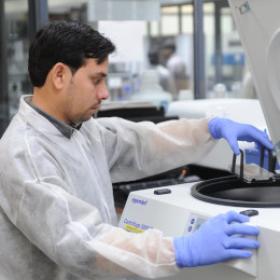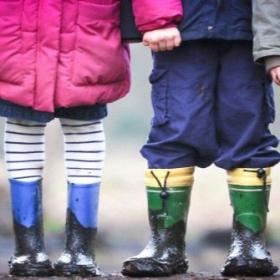Date last reviewed:
Thursday, Jul 18, 2024
On this page:
- Immunization can save your child's life.
- Vaccine-preventable diseases have not gone away.
- Immunizing your child helps protect others.
- Vaccines are safe and effective.
- It's much safer to get the vaccine than the disease.
- Vaccines can help reduce antibiotic resistance.
- Vaccines protect future generations.
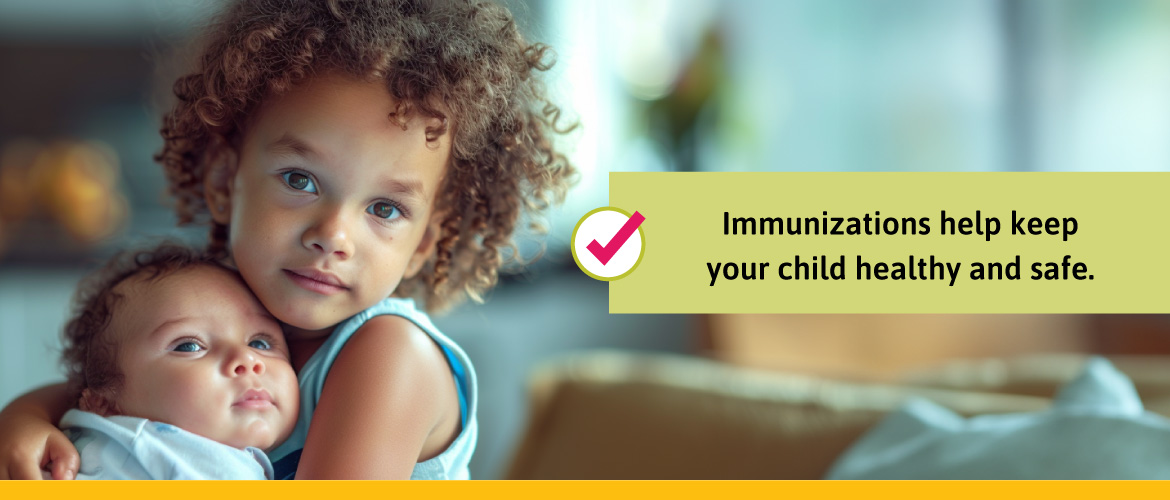
You know the importance of car seats, baby proofing, and other ways to keep your child safe. But did you know about the importance of immunizations?
Here are 7 important reasons to immunize your child.
1. Immunization can save your child's life.
Vaccines keep your child safe from serious diseases that can make them very sick, cause long-lasting problems, or even death. For example, Hib can damage the brain or lead to death, polio can cause paralysis, and HPV can lead to cancer. Some diseases, like measles and tetanus, have no treatment or cure. Vaccines are the only protection against these diseases.
2. Vaccine-preventable diseases have not gone away.
Many vaccine-preventable diseases are now rare in Canada because of vaccines. But the bacteria and viruses that cause these diseases still exist. If immunization rates drop, these diseases can come back; this has happened in other countries, resulting in many hospitalizations and deaths.
And diseases that are uncommon in Canada, like measles and polio, are still common in other parts of the world and can be brought to Canada by people who travel abroad. Without protection from vaccines, these diseases can spread quickly and cause outbreaks.
3. Immunizing your child helps protect others.
Immunizing your child doesn't just protect them; it also helps protect your whole community. This is because the more people in a community who are immunized, the harder it is for a disease to spread. This type of protection is called community (or herd) immunity.
Community immunity helps keep disease rates low and helps protect the most vulnerable among us, including babies, people undergoing certain medical treatments, and people with weakened immune systems.
4. Vaccines are safe and effective.
Vaccines are among the safest tools of modern medicine. All vaccines undergo in-depth testing and must be shown to be safe and effective before being approved in Canada. Even after a vaccine is approved, its safety continues to be monitored.
Vaccines work. Before vaccines were available, many Canadians suffered or died from diseases like polio, diphtheria, and Hib. Thanks to vaccines, many of these diseases are now rare in Canada.
5. It's much safer to get the vaccine than the disease.
Immunization is the best and safest way for your child to build immunity. If your child gained immunity by getting the disease, they would be at risk for severe illness and, in some cases, long-term disability and death. For example, meningococcal infection can cause deafness, loss of limbs, and brain damage, and chickenpox can cause pneumonia (infection in the lungs) and increases the risk of severe invasive group A streptococcal infection.
6. Vaccines can help reduce antibiotic resistance.
Immunizing your child can help reduce their need for antibiotics, which helps reduce antibiotic resistance.
For example, there was a decrease in antibiotic resistance to pneumococcal bacteria after the pneumococcal vaccine was introduced. Fewer antibiotics were dispensed because the vaccinated children were not getting sick with the disease. There was a similar decrease in bacterial resistance to antibiotics for Hib after the Hib vaccine was introduced.
7. Vaccines protect future generations.
Vaccines have reduced or even eliminated many diseases that killed or seriously harmed people just a few generations ago. For example, smallpox no longer exists worldwide because of immunization. If we keep immunizing, we may not need to worry about other diseases, like measles or polio, in the future.
GRAPHICS & VIDEOS
Vaccines work
This graphic shows how effective vaccines have been at reducing disease in Canada by comparing the number of disease cases before and after the introduction of each vaccine.
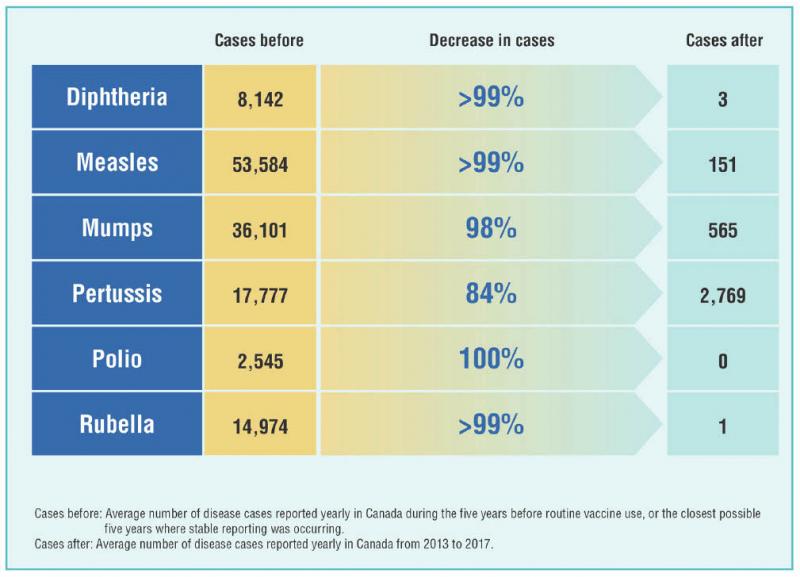
How community immunity works
This graphic shows how disease can spread quickly when no one is immunized and how the spread of disease is contained when most people are immunized.
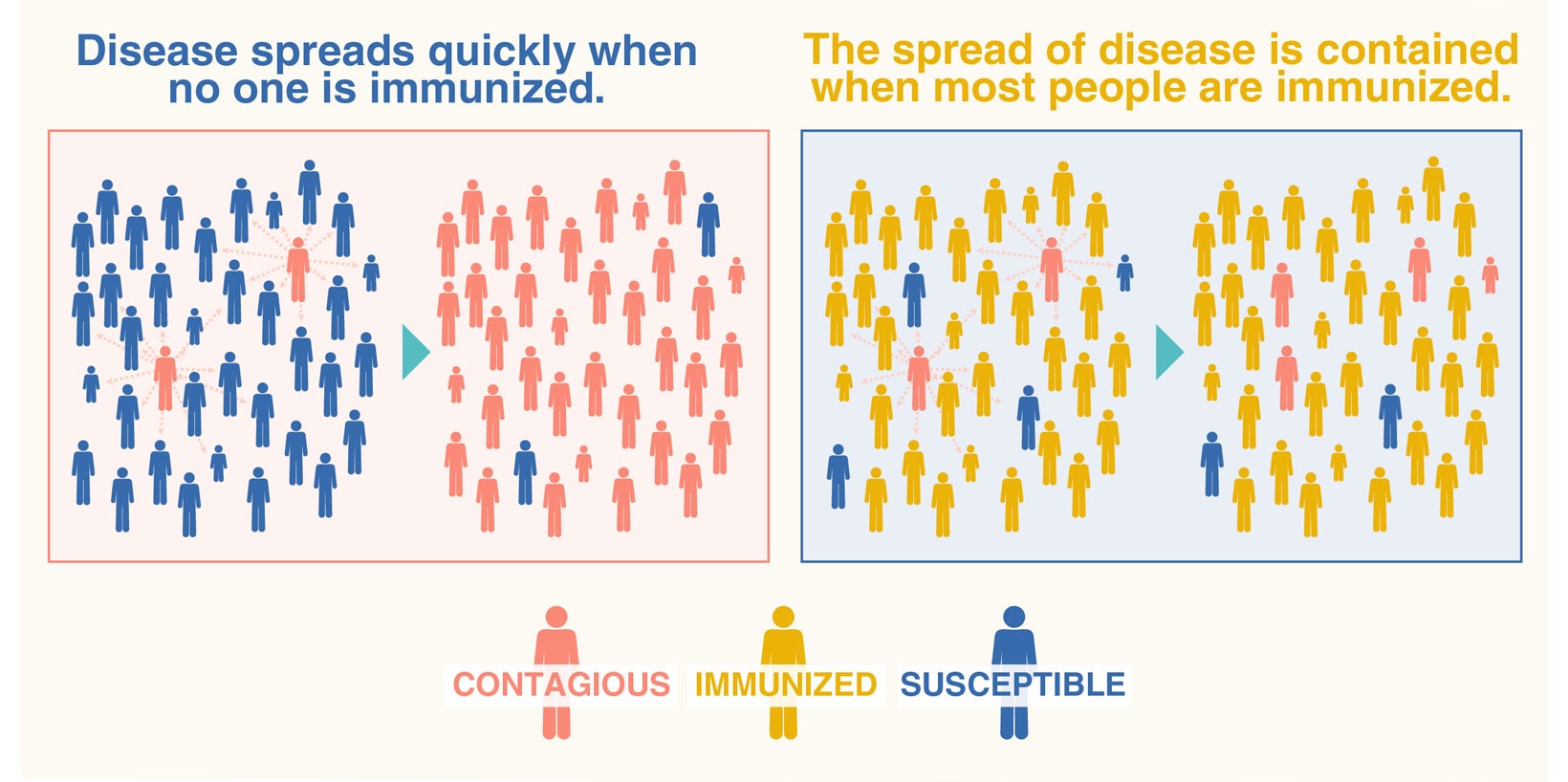
What is herd (community) immunity?
This video explains how community immunity works to protect your family and community.
Video courtesy of Health Canada. All contents may not be reproduced without permission and are copyright of Her Majesty the Queen in Right of Canada, Represented by the Minister of Health, 2012.

